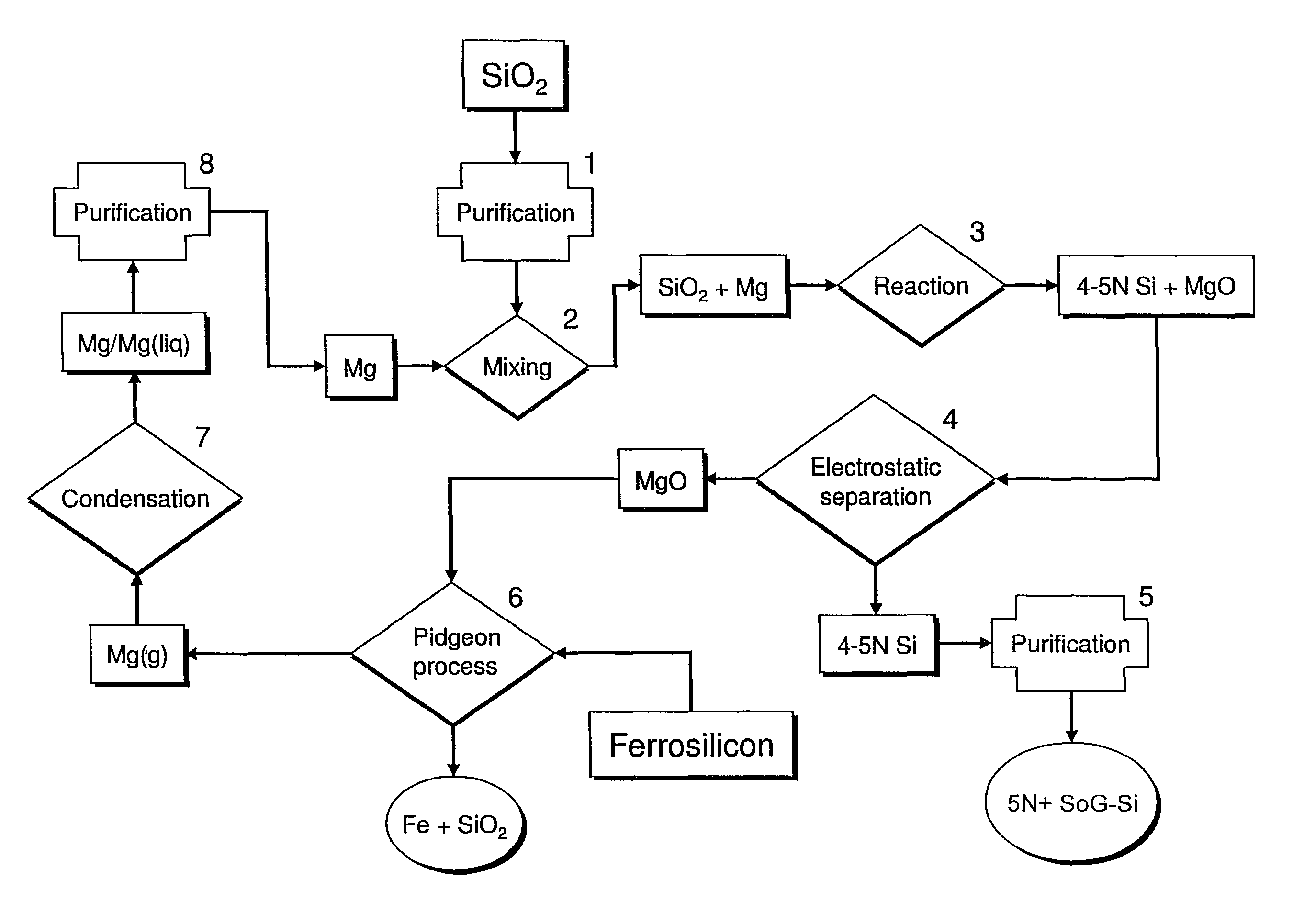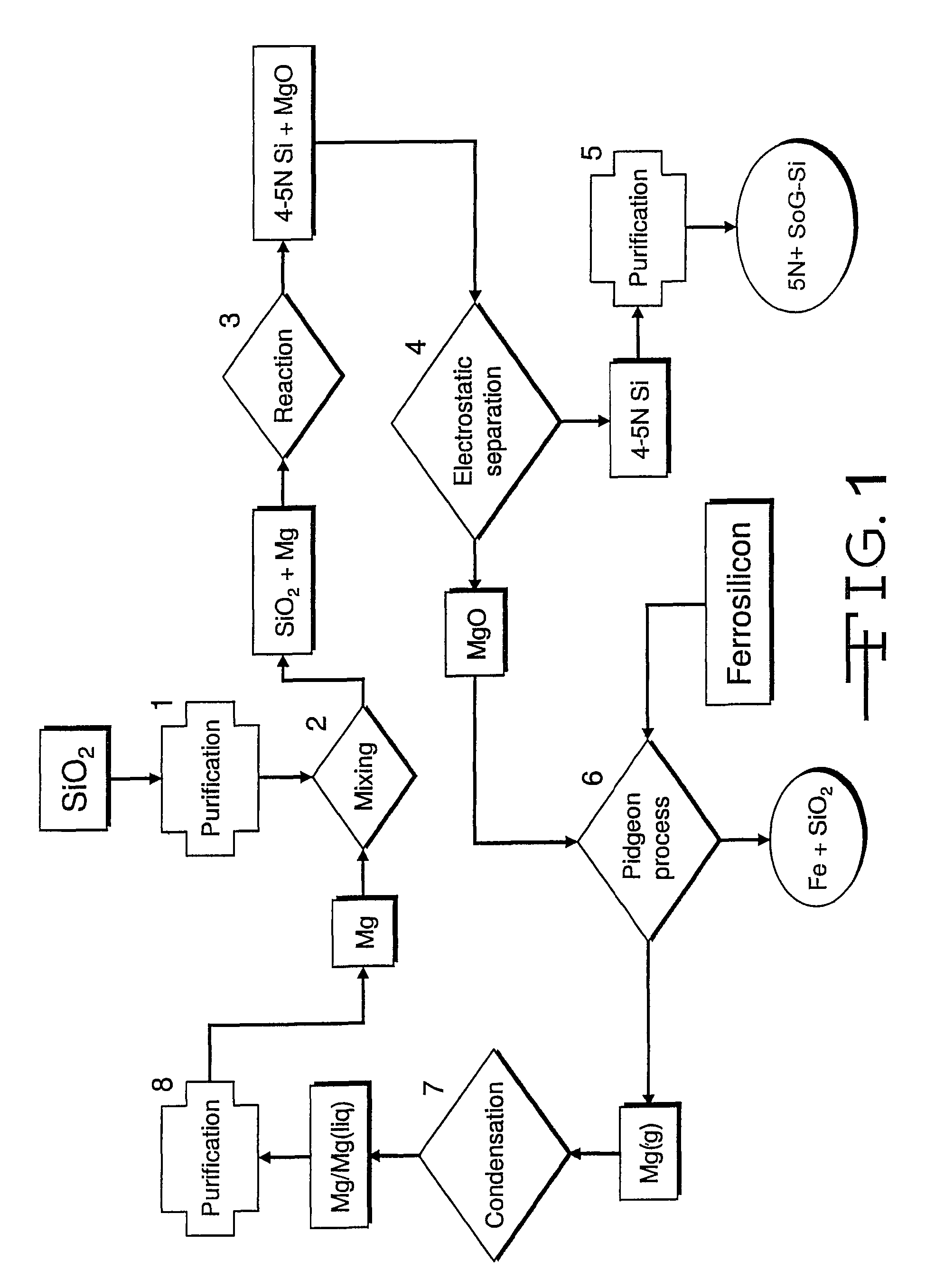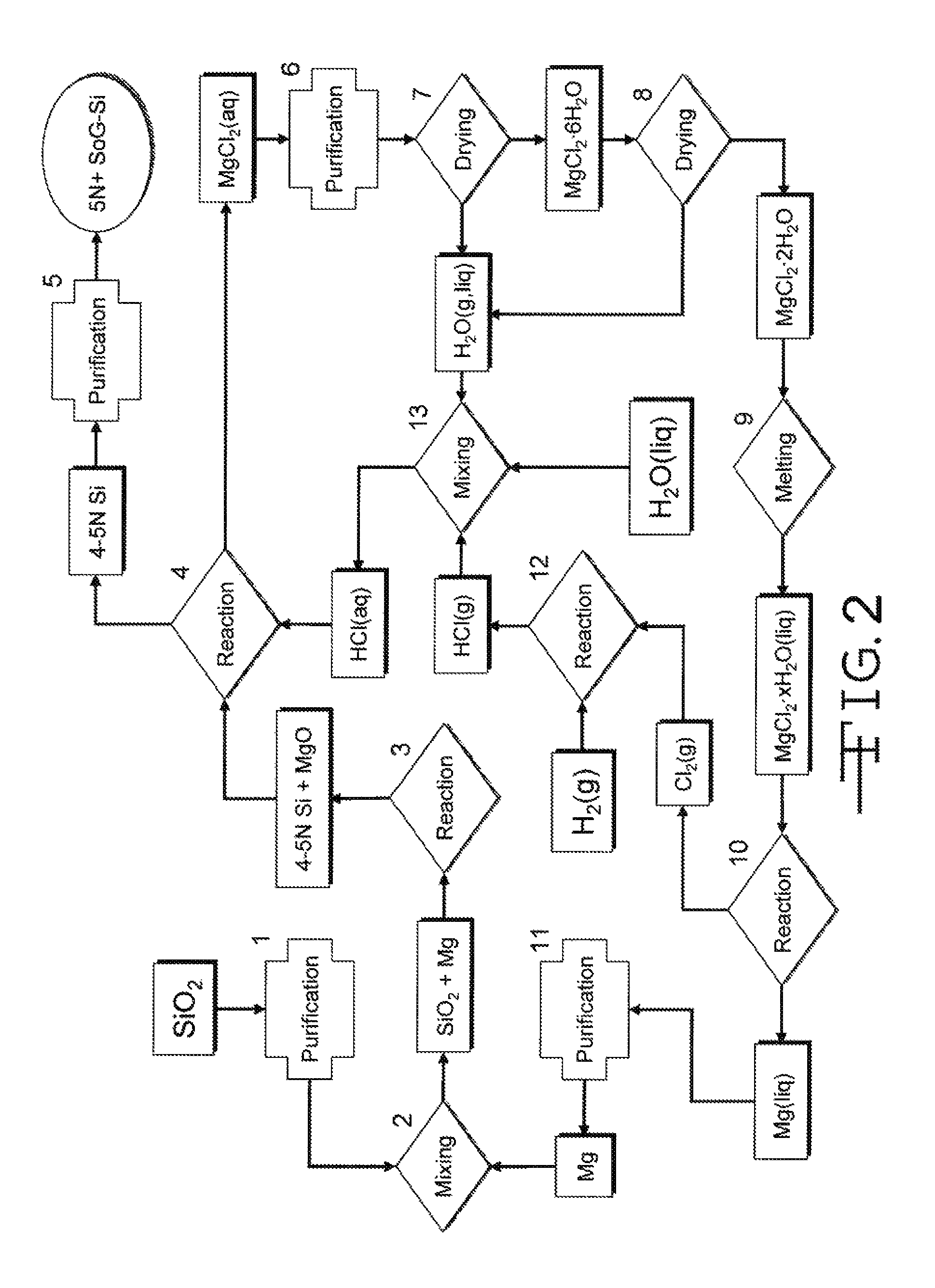Magnesiothermic methods of producing high-purity silicon
a technology of magnetism and high-purity silicon, applied in the direction of magnesium compounds, inorganic chemistry, calcium/strontium/barium oxides/hydroxides, etc., can solve the problems of high cost, high energy consumption, and difficult processing of monosilan
- Summary
- Abstract
- Description
- Claims
- Application Information
AI Technical Summary
Benefits of technology
Problems solved by technology
Method used
Image
Examples
first embodiment
[0023]In the magnesiothermic method (FIGS. 1 and 2), the purity (5N+) of the SoG-Si is determined: first, by the kinds and amounts of trace elements that are present in the two reactants (granular SiO2 and gaseous / liquid Mg); second, by the partitioning (subdivision) of the “released” trace elements that occurs as Reaction 1 proceeds; and third, by the extent to which the produced 4-5N Si is further purified by directional solidification during ingot casting.
second embodiment
[0024]In the magnesiothermic method (FIG. 3), the following additional steps are taken to produce 8N+SoG-Si. First, the 4-5N Si produced by Reaction 1 is converted to solid magnesium silicide, Mg2Si(s), by reacting the silica with magnesium gas, and sometimes also magnesium liquid, by the reaction
[0025]
[0026]Next, the Mg2Si(s) formed by Reaction 2 is brought into contact with hydrogen chloride gas, and / or gaseous or liquid hydrochloric acid, at any suitable temperature(s) (e.g., 80-300° C.) to produce silane gas, SiH4(g). In certain embodiments, the reaction also produces solid anhydrous magnesium chloride, MgCl2(s), or solid partially hydrated magnesium chloride, MgCl2.xH2O(s), or aqueous magnesium chloride, MgCl2(aq), by the generalized reaction
[0027]
where aq=aqueous, MH2O=the mass (kilograms) of consumed H2O, MMgCl2.H2O=the mass (kilograms) of produced MgCl2.xH2O, and x=a variable.
[0028]The SiH4(g) formed in Reaction 3 is thermally decomposed at a temperature, or over a range of ...
PUM
| Property | Measurement | Unit |
|---|---|---|
| temperature | aaaaa | aaaaa |
| temperature | aaaaa | aaaaa |
| temperature | aaaaa | aaaaa |
Abstract
Description
Claims
Application Information
 Login to View More
Login to View More - R&D
- Intellectual Property
- Life Sciences
- Materials
- Tech Scout
- Unparalleled Data Quality
- Higher Quality Content
- 60% Fewer Hallucinations
Browse by: Latest US Patents, China's latest patents, Technical Efficacy Thesaurus, Application Domain, Technology Topic, Popular Technical Reports.
© 2025 PatSnap. All rights reserved.Legal|Privacy policy|Modern Slavery Act Transparency Statement|Sitemap|About US| Contact US: help@patsnap.com



